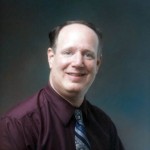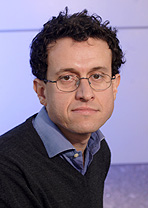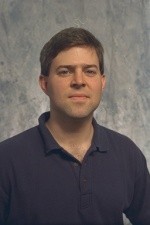Dr. Leslie J. Deutsch
Jet Propulsion Laboratory
California Institute of Technology
“Interesting Problems in Deep Space Communications”
For example, it is 100 times harder to communicate with a spacecraft at our Moon
than with one in geosynchronous Earth orbit – and approximately four hundred
million times harder from a spacecraft at Jupiter. NASA’s deep space communication
systems are among the most efficient anywhere. The antennas of the Deep Space
Network (DSN) can detect signals so weak that they would have to be integrated for
ten trillion years to power a refrigerator light bulb for one second. These efficiencies
are the product of decades of research into antennas, detectors, modulations, and
coding. We will consider two real-word examples of how NASA engineers and
mathematicians solve difficult communications problems in this context: the failure
of the high gain antenna on NASA’s Galileo mission to Jupiter, and the anomalous
relay radio design that almost led to a failure of the Cassini Huygens probe of
Saturn’s moon Titan. Both of these problems had to be solved on Earth while the
respective spacecraft were already well on their way to their destinations. We will
then consider some challenges for the future where further research will enable
new kinds of space missions.
Biography:
Dr. Deutsch received his Ph.D. in Mathematics from Caltech in 1980, the same year he came to the Jet Propulsion Laboratory. Dr. Deutsch developed techniques for communicating with the Voyager 2 spacecraft at Neptune and Uranus. He also developed microelectronics to enable more advanced communications systems to be placed on newer spacecraft. Dr. Deutsch received the IEEE Judith Resnick Medal in 1991 “for contributions to the theory and practice of deep-space telecommunications and information processing. In 1995, Dr. Deutsch co-led the team that redesigned the Galileo mission to Jupiter after the spacecraft’s high-gain antenna failed to deploy. For this work, he received the NASA Outstanding Leadership Medal in 1996. This work led eventually to a meeting between Dr.Deutsch and Pope John Paul II at the Vatican in 1997. Dr. Deutsch served as manager of NASA’s Deep Space Systems Technology program, sometimes called the “X2000 Program.” This program is responsible for developing the next several generations of spacecraft for exploring the solar system and beyond. Currently, Dr. Deutsch manages JPL’s Technology Program Integration Office and is responsible for developing the Laboratories strategy for overall technology investment. Dr. Deutsch holds 28 patents in the fields of communication and electronic music. He has written more than 40 technical papers in communications, microelectronics, space systems, and ground station design. Dr. Deutsch spends his spare time working as a professional musician and composer. He has given organ recitals in Europe and Japan and has served as Caltech’s organist since 1973. He performs with several jazz bands and has traveled extensively in North America and Europe playing the piano, trumpet, and tuba.
____________________________________________________________________
Andrea Montanari
Associate Professor,
Department of Electrical Engineering and
Department of Statistics,
Organization: Stanford University
Biography:
Andrea Montanari received a Laurea degree in Physics in 1997, and a Ph. D. in Theoretical Physics in 2001 (both from Scuola Normale Superiore in Pisa, Italy). He has been post-doctoral fellow at Laboratoire de Physique Théorique de l’Ecole Normale Supérieure (LPTENS), Paris, France, and the Mathematical Sciences Research Institute, Berkeley, USA. Since 2002 he is Chargé de Recherche (with Centre National de la Recherche Scientifique, CNRS) at LPTENS. In September 2006 he joined Stanford University as a faculty, and since 2010 he is Associate Professor in the Departments of Electrical Engineering and Statistics. He was co-awarded the ACM SIGMETRICS best paper award in 2008. He received the CNRS bronze medal for theoretical physics in 2006 and the National Science Foundation CAREER award in 2008.
___________________________________________________________________
Vahab Mirrokni
Staff Research Scientist
Google Research, New York
Session 3
Time: 9:00 AM, Feb 1st
Biography:
Vahab Mirrokni is the manager of the algorithms research group and a staff research scientist at Google Research in New York. He also teaches Algorithms and Economics of the Internet as an adjunct associate professor at the Courant Institute at NYU. Previously, he was a senior scientist at Google. Prior to Google, he spent a couple of years as a researcher in the Theory Group at Microsoft Research, the Theory of Computation Group at MIT CSAIL, and the strategic planning and optimization group at Amazon.com. He received his PhD from MIT in 2005 under supervision of Professor Michel Goemans , and his B.Sc. in Computer Engineering from Sharif University of Technology.
____________________________________________________________________
Cameron Riviere
Associate Research Professor, The Robotics Institute
Associate Research Professor (by courtesy), Dept. of Biomedical Engineering
Director, Surgical Mechatronics Laboratory
Carnegie Mellon University
Adjunct Associate Professor, Dept. of Rehabilitation Science & Technology
University of Pittsburgh
Much of the research in the Surgical Mechatronics Laboratory of the Robotics Institute at Carnegie Mellon involves active and passive robotic compensation of physiological motion for surgical accuracy enhancement.
The goal of enhancing accuracy in microsurgery while also minimizing cost and maximizing ease of use has motivated the development of a fully handheld instrument, known as Micron, which senses its own motion, estimates the undesired component of its movement, and active compensates by deflecting its tip to oppose the undesired component. Feedback sensing for control is provided by a purpose-built frequency-multiplexed optical tracker that provides six-degree-of-freedom tracking with noise of several microns at 2 kHz sampling. Actuation in the latest 6-DOF prototype involves ultrasonic linear motors. To enable vision-based control modes, the system is augmented with a stereo pair of cameras that view the workspace through the operating microscope. The talk will describe the design and operation of Micron, and will present experimental results from a variety of control modes including visual servoing and semi-automated scanning pattern generation.
Passive compensation is the approach followed by HeartLander, an intrapericardial crawling robot that performs passive compensation of heartbeat and respiratory motion during minimally invasive surgery. The crawler adheres to the epicardium using suction, and moves via inchworm-like crawling, driven by flexible push-wires connected to motors outside the patient. Recent results with the system will be presented, including improving locomotion efficiency via synchronization with heartbeat and respiration, particle filtering for accurate localization on the beating heart, and technologies for treatment by myocardial injection.
Biography:
Dr. Riviere received the Ph.D. in Mechanical Engineering from The Johns Hopkins University in 1995, and joined the Robotics Institute the same year. He received second place in the 1995 Whitaker Student Paper Competition of the IEEE Engineering in Medicine and Biology Society. Since 1997 he has also been an Adjunct Assistant Professor in the Department of Rehabilitation Science and Technology at the University of Pittsburgh. He is interested in control systems, robotic devices, signal processing, learning algorithms, and high-precision interfaces for biomedical applications, including surgery and rehabilitation.
____________________________________________________________________



